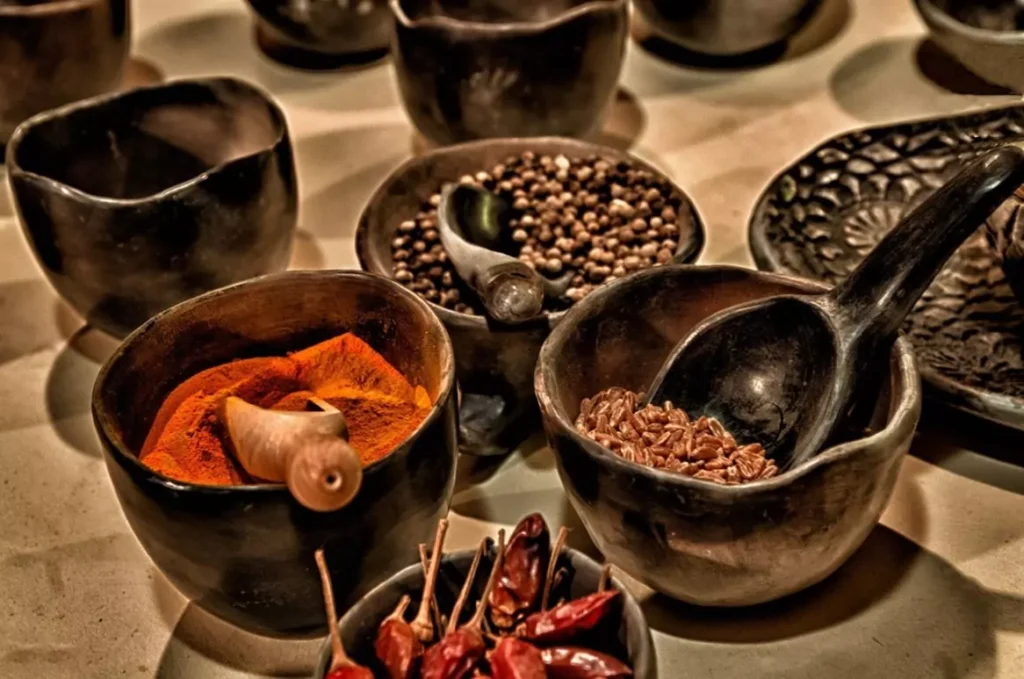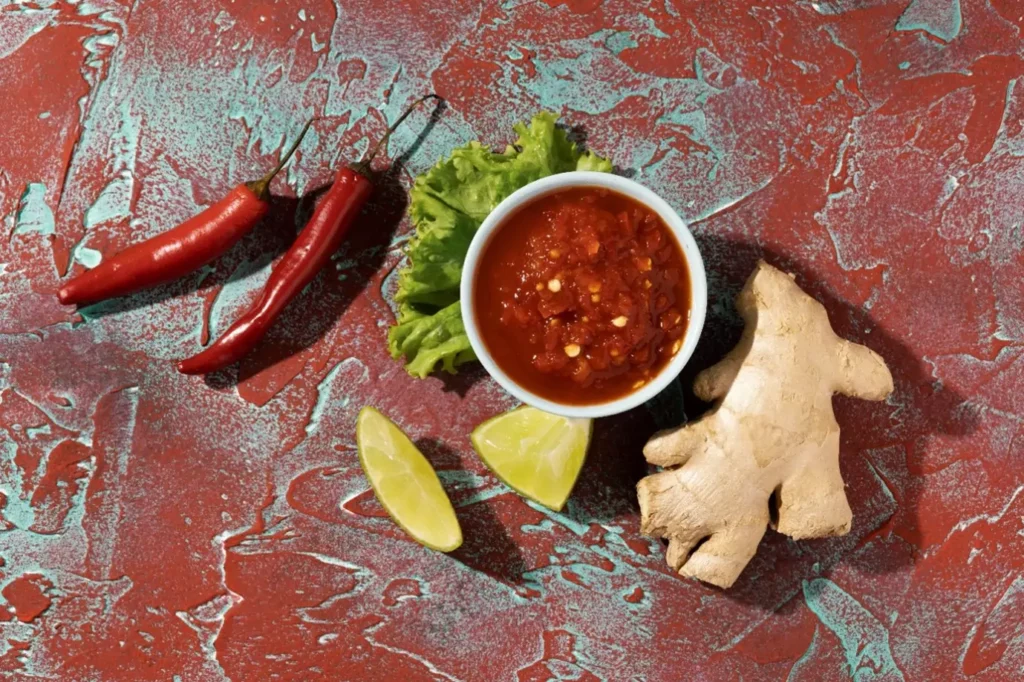The word Cayenne comes from Kian, the name of a pepper among the Tupi Indians in what is now French Guiana. Located on the northeastern coast of South America, this pepper is named after the Cayenne River or the country’s capital, Cayenne. This breed was first documented in 1493 and was brought by Christopher Columbus from Chile to Portugal.

Cayenne pepper is called the king of herbs by herbalists and naturopaths. But I wonder what path it takes before it enters our kitchen.
Table of Contents
From plantation to table
The name cayenne pepper is misleading because it is not actually a pepper, but a type of chili pepper. It is one of the most ancient medicinal herbs of mankind, which has traveled almost the entire planet and is considered a highly valued medicinal herb in different corners of the earth. One of the plants produced since the beginning of time, it has been used for healing by the Inca, Aztec and Mayan civilizations for thousands of years, and the Native Americans have used it for more than 9,000 years.
Since it starts its conquering journey from South America, it is still harvested by hand in Cayené, as this ensures proper ripeness and quality. The ripe fruit is roughly 15-25 cm long, has a curved end, is basically red in color, but there are also yellow and purple versions. It belongs to the category of moderately hot peppers. According to the Scoville scale, it has a strength of 30,000 and 50,000 SHU.

Peppers arriving at the plant from the plantation are first thoroughly washed, and dirt and damaged pieces are removed during cleaning. This is followed by the drying process, which is one of the most important steps in processing. During drying, the peppers lose their moisture content, thus preserving their flavor and active ingredients
After drying, grinding follows, the finer the quality of the grinding, the stronger its aroma

Health benefits
this should rather be asked as to what it is not good for, because this could be answered more quickly
Cardiovascular health:
What has earned it its greatest reputation is its invigorating and healing effect on the heart and blood vessels, because according to experience, it can stop a heart attack in 30 seconds. Regular consumption keeps the heart in top shape. It improves circulation, rebuilds blood cells, and lowers cholesterol.
To improve digestion:
It protects the mucous membrane of the stomach and rebuilds the tissues in the stomach. As it stimulates the digestive processes, it helps a weak stomach, treats heartburn and flatulence
Energy boost:
Treats weakness and exhaustion. In case of illness, it helps the body regain its internal strength. It strengthens the immune system and stimulates metabolic processes
Anti-inflammatory and antifungal:
Due to its fungicidal effect, it can be used to treat sore throat and tonsillitis.
For other problems
It is also good for seasickness and can be used against allergies.
Now that we have learned about its beneficial effects, which can contribute to living up to 100 years, you can read more about it HERE.
Let’s see what the Cayenne can do in the kitchen
taste: cayenne brings the heat with a fiery kick
color: orange tint

An important ingredient of Creole and South American cuisine, Indians and Asians made traditional dishes from it. Excellent for fish dishes, seafood and what else but Chili sauce.

The Victoria Cruises chef gives the following recipe idea if you would like to try VCL’s Chili sauce before departure
1) choosing the right pepper, cayenne pepper provides a balance between spiciness and aromatic taste, so it can be used in many dishes
- selection of ingredients:
- vinegar, which acts as a preservative and adds acidity to the sauce
- garlic: which lends a pleasant aroma and deep taste
- onion: finely chopped onion adds sweetness and the right texture to the sauce
- salt: essential when making chili sauce
- sweet additive: honey or brown sugar, these sweeteners help to balance the spiciness and create a harmonious taste
- lime or lemon juice: add a little twist of citrus juice to the hot chili sauce, it makes the sauce more lively
- spices: you can raise the chili sauce to a higher level with ginger or oregano
- fruits: mango or pineapple provides a sweet and fresh taste that perfectly complements the pleasant spiciness of chili peppers

3) frying the chili pepper: heat an iron pan and add some olive oil. Steam the peppers, garlic and onions until they become soft and fragrant
4) now that we’ve added extra flavor to the chili peppers, it’s time to blend them into a smooth and tasty sauce
- Blending: put the chili pepper and the selected ingredient, such as garlic and onion, into the blender.
- seasoning: taste the sauce and adjust the salt, sugar and lime
5) cooking: not in the case of natural sauces, but in the case of fruit chili dip, we always cook the blended, seasoned sauce before bottling
6) you are only one step away from enjoying VCL chili sauce. Follow the guidelines below for proper bottling and storage
- sterilize the bottle
- cool the sauce
- fill the bottle
- close the bottle
- storage: store in the refrigerator, with proper storage it can last for several months

Cayenne pepper is a true natural wonder that offers a rich flavor and many health benefits. The history of cayenne pepper from the field to the kitchen is truly fascinating, and we appreciate this wonderful spice even more when we learn about its journey. If you want to spice up your food and improve your health, feel free to reach for this hot spice. Don’t forget to always use it in moderation and enjoy all the benefits of cayenne pepper.


